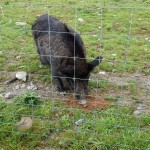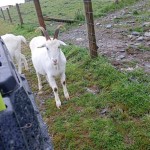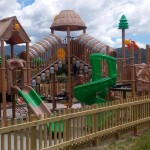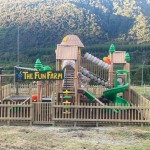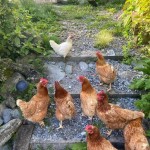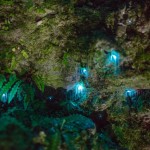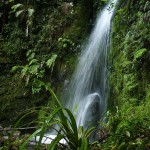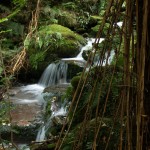There’s so much for kids to do at Jacksons Retreat! We have beautiful walks to waterfalls, glow worms, a play area with our brand new activity centre, as well as chickens, pigs, goats and more!
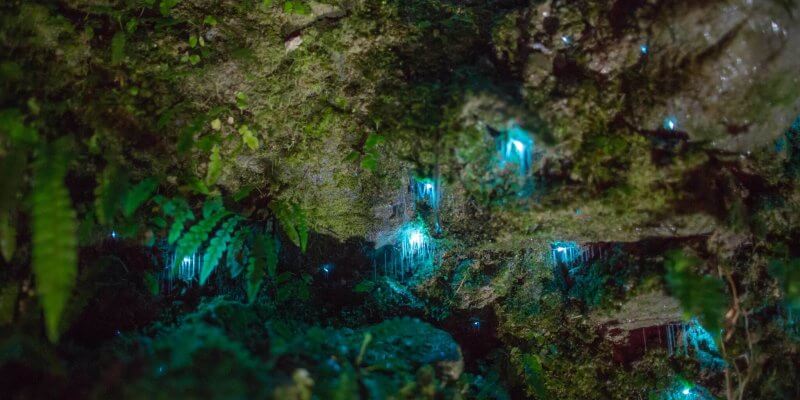
Glow worms
Glow Worm Dells – a fun night-time adventure! We have 4 sites to check out!
Did you know – the light from a glow worm comes from an organ which is the equivalent of a human kidney!
These little glowing wonders of nature can be seen along the creek banks where it is damp and mossy and protected from the breeze.
Along your journey there are many small dells that you will be able to see but only if your using your red light – be warned, use a white light you’ll miss out! RED light is a must for protecting the Glow Worms and for your night vision. Get your free red cellophane from the kitchen/lounge area – please re-cycle after your use for other guests.
Remember to turn off your torch – wait for your eyes to adjust and many many more lights will appear.
Site #1 For guest willing and able to walk the Ngariumu track in the dark, approx 10min from the Red gate, at the 2nd creek walk down to the creek bed – don’t cross it – turn around looking at the bank you just walked down you’ll be spellbound with the little lights. If you are more adventurous, walking up and down the creek bed you will be amazed with how many places are lit up and some nights you don’t even need a torch.
Site #2 Follow the path into the forest trees, within moments you will find several dells along the creek bank leading to a magnificent glowing natural wall.
Site #3 This site is a smaller site great for little ones that don’t want to be in the bush. The sign leads you across the grass to the bush and it’s literally 3 steps down to the creek edge, here you will need to crouch down and look up & down the steam.
Site #4 By day this site has a gorgeous little waterfall made by a fallen Rimu tree probably hundreds of year old………..but by night it is a magical spot for seeing natures little forest lights and again great for the little ones.
REMEMBER…….BE QUIET……..LOOK………DON’T TOUCH…..&…..TURN OFF YOUR LIGHT
I wish I was a Glow-Worm, a glow worm’s never glum, ’cause its hard to be unhappy, when a light shines out ya bum!
Local flora and fauna
Jackson’s Retreat is lucky to share the home of an extensive range of native birds. Many of our native birds are critical for dispersing seeds and pollination of native trees.
Kereru, which was protected from hunting in 1922, also known as Wood Pigeon spread the seeds of trees with large fruit such as Miro, Puriri, Tawa and Tairare, the Kereru can be great fun to watch when they eat the fermented berries and literally fall out of the trees DRUNK!
Listen out for the Bellbirds and the Tui being which was one of our earliest protected birds, protected since 1873.
Both are known for not only their stunning musical calls early in the morning and at dusk, they also pollinate several native species that you will find around our Park like Flax (Harakeke), Kowhai and Fuchsia (Totukutuk) trees.
Other species you will see around our Park or in the Rainforest:
- Daily – Kereu, Weka, Falcon, Tui, Bellbird, TomTit, Silver Eye (Waxeye), Fantail, Song Thrush
- Often – Shag, Paradise Duck, Kingfisher, Grey Warbler, Chaffinch
- Occasional – Shining Cuckoo, Rock Wren, Rifleman, NZ Robin, Kaka
- Rear – Yellow Crowned Parakeet, Kea
- Night time Only – Morepork, Great Spotted Kiwi – listen for their shrill call
Don’t forget our well-loved chickens – .we have their fresh free range eggs available @ The Camp Pantry.
Kiwi Spotting – why are New Zealanders called Kiwi’s? Well, here’s one story…..
New Zealand’s servicemen were by and large country & farm boys. They would have been very familiar with the kiwi bird as they were still very numerous in rural areas around the turn of the 20th century. Perhaps it appealed to their sense of humour to take on the identity of a bird where the male had a glorious far reaching call and the female just growled, where the female laid a huge egg which the male incubated. It sounded all too much like married life to the New Zealand male. Being such aggressive scrappy birds with their strong legs and sharp claws they would take on anything and anyone. The soldiers made the bird their own.
Sporting women & men today have the silver fern on their uniforms, but they all represent their country as proud Kiwi’s
NZ’s national icon is here in the bush and have been seen wandering into the Park grounds or on occasion have been spotted on the way to the Glow Worm dells.
Male great spotted kiwi has a high trilling whistle call repeated between 6 and 20 times and the females call is lower and harsher. Google their call so you know what to listen for.
Remember they are nocturnal and very very shy. Waiting for complete darkness and when most campers are tucked up in bed, now is the time to see if any Kiwi have ventured out – remember your RED light and you must be very quiet, use a white light and you will miss out!
A fabulous site to check out all about The Kiwi https://www.kiwisforkiwi.org
Flora & Fauna – our Rainforest has many majestic Rimu hundreds of years old
You will find many native trees on and around our Park, Rimu – Kamahi – Rata and Fuchia to name but a few.
Many of our native trees are protected like Rimu, these can grow up to 50 metres high and the majestic ones you see around and behind our park can have a life span of 800-900 years.
Kamahi “The Honey Tree” is produced on the West Coast. Kamahi is in fact a honey with very complex flavours and after tones that send honey gourmets into paroxysms of delight.
Southern Rata is also another major honey tree for the West Coast but more importantly it is also known as NZ’s own Christmas Tree as the beautiful flowers are abundant during December & February turning the Alpine forests crimson.
NZ native Fuchia is a fast growing soft wooded tree that you will see abundantly around our park, Bellbirds, & Tui love the nectar and when the flowers are spent the Kereru gobble up the berries – watch out walking around or under the trees Kereu will fly in at low altitude. The berries also can be eaten and used for cooking of chutneys & sauces.
NZ Punga – Silver Fern(Ponga) and Wheki are our main tree ferns on and around our park. A Koru is the spiral shape based on the appearance of a new unfurling silver fern frond. It is an integral symbol in Māori art, Pounamu carving and tattooing, where it symbolizes new life, growth, strength and peace. We have a beautiful range of locally crafted Pounamu available for sale at The Camp Pantry.
During your travels on our tracks you will also have the opportunity to see various species of Fungi, these could be bright colours or weird shapes like Stink Horns, Puffballs & Earthstars, Wood-ear and the Tooth fungi. Let the children’s imagination go wild with Forest Fairies and their fanciful fungi playground.
Not only will you be serenaded by bellbirds and Tui but you will be followed by TomTits (Ngirungiru) and chatty Fantails (Pīwakawaka) which will be flitting around snapping up the little insects that you disturb on the way.
NGARIMU WALKING TRACK – Ngarimu means “The Rimu” Strong & Proud
For your safety while walking the tracks or trails on and around Jackson’s Retreat please always be aware of your surroundings, the terrain suites most abilities with a moderate fitness level, ensure you understand your own walking abilities and do not take any risks.
Parts of our tracks and trails will require you to have “route-finding skills”, we have various markers on our tracks, but they may not always be visible or continuous. We advise you not to tramp alone but if that is your plan please let someone know your intentions before you start.
Remember to prepare for your trip so that it is safe and enjoyable. Your safety is your responsibility, make well informed decisions to suit not only yourself but your whole group especially small children, ensure they are always supervised especially when around the various creeks that boarder our property and in the Rainforest.
Our forest has no snakes, spiders, leeches or nasty animals, you are completely safe to roam and enjoy.
Our tracks are not suitable for cycle or pushchairs.
The Waterfall track -40min return trip. The start of the Ngariumu walking track is the RED gate, follow the spectacular true Kiwi Bush Track to our stunning waterfall. In Summer months the water from this waterfall is wonderfully refreshing coming straight from the snow! We would love to see your photos and add them to our guest collection on Facebook or TripAdvisor or send them to us at info@jacksonsretreat.co.nz so we can post them on our site.
1860’s Quartz mine site 2.5-3 hrs return trip. Meandering along on the main Ngariumu track as you walk through untouched historic native rainforest the track forks to the Left, follow this to the abandoned Battery Road which zig-zags up to the old 1860’s quartz mine abandoned working area with a few relics scattered, you can see the platform areas where their huts would have been and if you forage in the nearby stream you may uncover some more relics or gold. Take a moment to appreciate the life the miners living here endured as the bush now re-claims the area.
**It’s not always about the destination but the journey through the forest**
Land is considered a resource to be respected according to the principle of KAITIAKITANGA
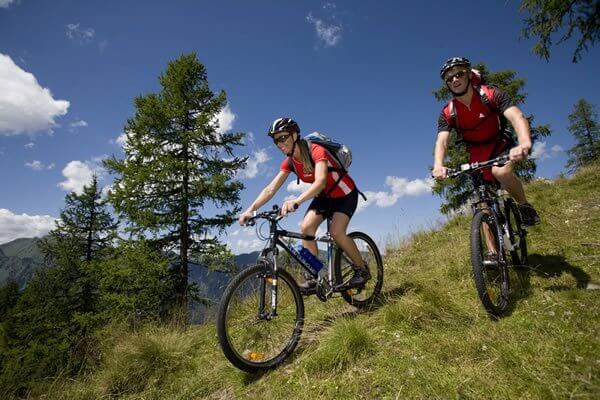
Hiking, Cycling & Trails for feet and wheels
The Bald Range – our southern range Rangi Taipo has an altitude of 1400m, widely tramped to the Kelly Range and up to Arthurs Pass.
There is a beautiful river & bush trail for both feet & wheels along the Taipo River approx 5min drive West of our Park.
Mt Alexander and The Kaimata Range – our Northern & Nor Western range, Mt Alexander has an altitude of 1958m, this is a two day hike staying over night in a DOC hut, the track starts on Lake Brunner road literally 5 mins from our Park and is a two-day hike.
Mt French – Hohonu Range – our Nor Eastern Range has an altitude of 1305m, the track starts from Mitchells Lake Brunner and is a 7-8-hour hike, views can be from Mt Cook to Able Tasman – stunning.
These tracks are known by the locals to be some of the best in the area as they are less frequented by the masses and are therefor more pristine.
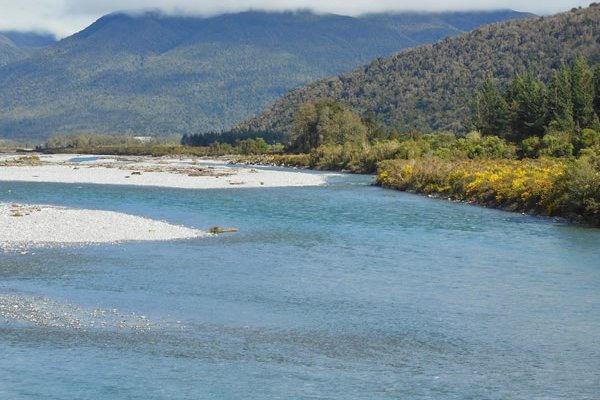
Boating
For your adrenaline rush Jet Boating on the Mighty Taramakau River or you can choose to play on Lake Poerua or Lake Brunner.
Contact us to find out more about outdoor adventure and activities available when you stay at Jackson’s Retreat Alpine Holiday Park.
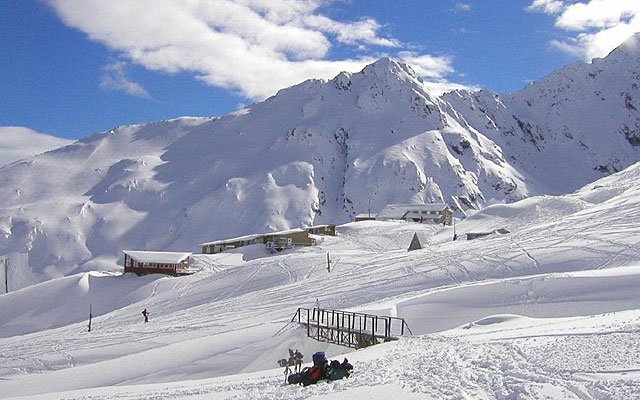
Skiing on the Southern Alps
SKIING ON THE SOUTHERN ALPS – Jackson’s Retreat back yard!
Temple Basin Ski Field – 20 min drive East of Jackson’s Retreat https://www.templebasin.co.nz
Ungroomed ski and snowboarder’s paradise in Arthur’s Pass National Park, New Zealand.
Craigieburn Valley Ski Area – 1hr drive East of Jackson’s Retreat. Located in the heart of New Zealand’s Southern Alps, where the ups are good, and the downs are even better. Steep narrow chutes, wide open powder bowls, uncrowded runs or just a place to take it easy in the awesome vista of the Craigieburn Range. If you are an advanced or expert rider then skiing The Big One at Craigieburn is your holy grail!
Mount Cheeseman is a club snowfield in New Zealand’s South Island, near the town of Springfield, about an hour and a half from Christchurch. Situated in a south-east-facing basin, it features two T-bar lifts and one learner tow.
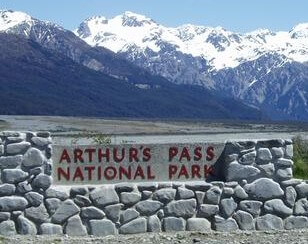
Arthur’s Pass
Arthurs Pass – The township and the pass are named after Sir Arthur Dudley Dobson (1841–1934). Arthur Dobson had been tasked by the Chief Surveyor, Thomas Cass, to find out if there was an available pass out of the Waimakariri watershed into valleys running to the West Coast. In 1864, his brother Edward joined him and accompanied him into the valley of the Otira River. A West Coast Māori Chief, Tarapuhi, told Arthur of a pass that Māori hunting parties occasionally used. When Arthur returned to Christchurch, he sketched the country he had traversed and included it in a report to Cass. Arthur Dobson did not name the pass, which he found very steep on the western side.
Dobson named the site that became the township “Camping Flat”.
When the West Coast Gold Rush began in 1864, a committee of businessmen offered a £200 prize for anyone who would find a better or more suitable pass from Canterbury over the Southern Alps to West Canterbury (the West Coast). At the same time George Dobson, (another brother), was sent to examine every available pass between the watershed of the Taramakau, Waimakariri, and the Hurunui. After examining passes at the head of every valley he reported that “Arthur’s” pass was by far the most suitable for the direct crossing and the name stuck.
Find out more about Arthur’s Pass here: https://www.arthurspass.com/
Arthur’s Pass, climbing to more than 900 metres through Arthur’s Pass National Park, is the highest and most spectacular pass across the Southern Alps.
If you’re travelling from Canterbury to the West Coast, this is the road to take. It is a piece of extreme engineering involving viaducts, bridges, rock shelters and waterfalls redirected into chutes.
Arthur’s Pass National Park itself is a landscape of two halves. On the eastern side, you’ll see wide, shingle-filled riverbeds and vast swathes of beech forest. Descending the western side and you venture through dense rainforest alongside and over deeply gorged rivers. From our Park you will be able to watch the Trans Alpine Train cross the Mighty Taramakau River.
If you’re feeling adventurous, go hiking, mountaineering or even take in the more gentle Arthurs Pass village walks, here you are spoilt for choice. You’ll probably spot New Zealand’s inquisitive and comical alpine parrot, the Kea, along the way and during winter you can join the lucky skiers and snowboarders enjoying spectacular runs in the Temple Basin Ski Area approx a 20min drive from Jackson’s Retreat.
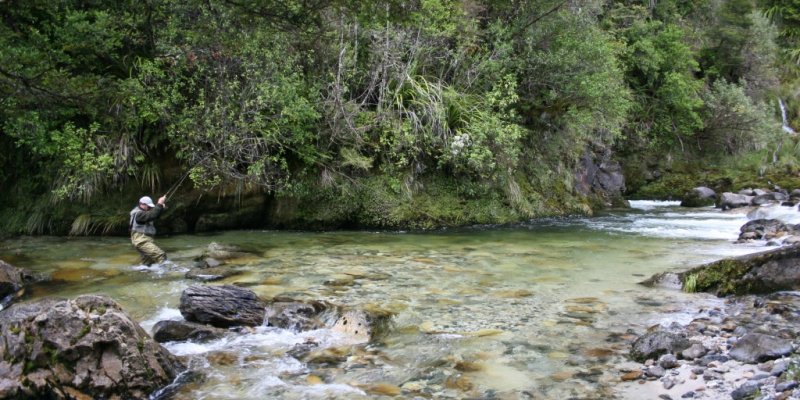
Aquatic Life – pristine & crystal clear
Humphries Creek has friendly eels which you can feed and keep an eye out for the local adult Inanga.
The annual whitebait (inanga) migration was an important mahinga kai resource for Māori all around Aotearoa.
Adult Inanga were also taken during their downstream migration to the ocean when they were rich and full of eggs. Captured fish were either dried in the sun or on rocks. Preservation in this manner meant that the fish could be kept in an edible state for months.
River Fishing – on the Mighty Taramakau River @ Rocky Point for Rainbow & Brown Trout, Crooked Creek on the way to Moana.
Lake Fishing – Lake Brunner is the locals best kept secret for Brown Trout or catch the Lake Brunner Safari for guaranteed fishing fun.
Remember you will need a fishing license which is available on line https://fishandgame.org.nz/licences/
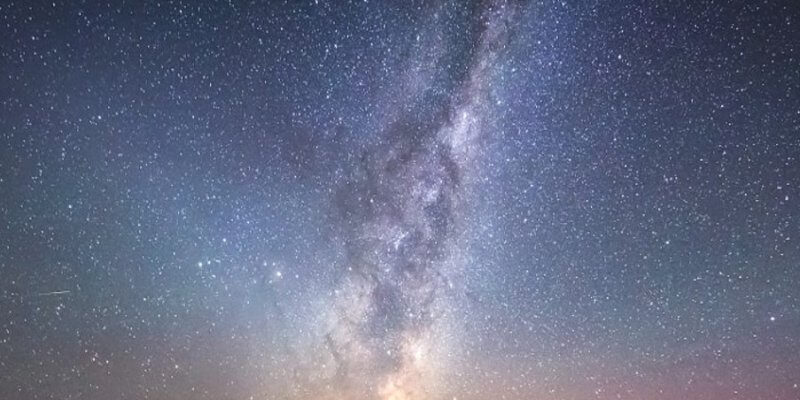
Stargazing at the Jacksons Retreat
Astrophotographers and Star Gazers Paradise – The South Island of New Zealand has the largest Dark Sky reserves anywhere on planet Earth! Find a peaceful spot around the campgrounds to set up and gaze upward for a rewarding view, if the night is cloudy pop down to one of the glowworm dells for an impressive impersonation of the night sky.
New Zealand, also known as Aotearoa and The Land of the Long White Cloud. But when the clouds clear our night sky offers some of the best photo and stargazing opportunities in the world.
The southern night sky contains a greater range of interesting features than does the northern.
This is true for both naked eye and telescope observing. The southern sky claims the three brightest stars (Sirius, Canopus, and Alpha Centauri) and the best examples of almost every type of astronomical object.
New Zealand also has a superb view of the Large & Small Magellanic Clouds – two extraordinary galaxies visible to the naked eye that are too far south for northern hemisphere viewers.
During our winter months, sheltered by our mountain ranges we are gifted with plenty of cloudless night skies.
Star Gazing at Jackson’s Retreat you will be treated with extensive constellations, shooting stars and glittering dark skies, you can stare directly into the center of the Milky Way directly overhead during winter.
To see the Southern Cross throughout the entire year one needs to be south of the Tropic of Capricorn and because of this the Southern Cross is still widely used as a navigation tool for Southern Hemisphere sailors.
Alpha Crucis or Acrux, at the foot of the cross, is the brightest star of the Southern Cross, it is the 14th brightest star in the night sky.
New Zealand’s flag also has the four main stars of the Southern Cross, this flag hasn’t always been our official flag. Although widely used since 1869, it was only formally adopted in 1902.
There are different traditional interpretations of the Southern Cross in New Zealand, and it is known by at least eight different names in Māori.
Tainui Māori saw it as an anchor, named Te Punga, of a great sky canoe, while to other Māori it was Māhutonga – an aperture in Te Ikaroa (the Milky Way) through which storm winds escaped.

